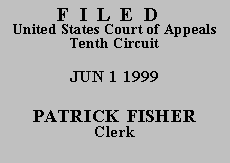

| VICKERY DESIGN, INC., a New
Mexico corporation,
Plaintiff-Appellant,
v.
ASPEN BAY COMPANY, a foreign
corporation, Defendant-Appellee. |
No. 98-2217
(D.C. No. CIV-96-25-JP/DJS) |
Vickery Design argues that the district court erred (1) in holding that a candle in the shape of a miniature ear of corn is not subject to copyright protection, (2) erred in not applying an "ordinary observer" test to determine substantial similarity, and (3) erred in holding that Aspen Bay's corn candle was not substantially similar to the Corndle.
We review the district court's dismissal for an abuse of discretion. We accept the district court's factual findings unless they are clearly erroneous and review application of legal principles de novo. See Harolds Stores, Inc. v. Dillards Dep't Store, Inc., 82 F.3d 1533, 1555 (10th Cir. 1996); Country Kids 'N City Slicks, Inc. v. Sheen, 77 F.3d 1280, 1283 (10th Cir. 1996).
The copyright law does not allow a monopoly on the idea of an object occurring in nature. See 17 U.S.C. § 102(a) (providing that copyright protection extends only "to original works of authorship fixed in any tangible medium of expression."); see also Herbert v. Rosenthal Jewelry Corp. v. Kalpakian, 446 F.2d 738, 742 (9th Cir. 1971) (idea of a pin in the shape of a bee cannot be protected by copyright). While the idea cannot be monopolized, the artistic expression of that idea is protected by copyright laws. Thus, a candle in the shape of a miniature ear of corn created to reflect the way it occurs in nature cannot be claimed as an original work to be protected by copyright laws although the unique expressions of the actual corn candle can be protected. See Country Kids 'N City Slicks, Inc., 77 F.3d at 1286 (distinguishing the idea of a wooden form of traditional paper dolls from a copied doll); Concrete Machinery Co., v. Classic Lawn Ornaments, Inc., 843 F.2d 600, 607 (1st Cir. 1988) (distinguishing the concept of a concrete life-sized deer from the facial expression, pose and posture of a particular created deer.)
In the instant case, the district court found that although the Corndle was substantially similar to Aspen Bay's miniature corn candles in shape, taper, color and weight, those features pre-existed in nature and occurred from a commonality in the subject matter. Both candle designs were produced from molds of real ears of corn. The district court further found that the actual artistic expression of the ears were not the same. For example, Corndles have straight rows of kernels while Aspen Bay's rows have a twisted shape. Having reviewed the record and the proffered exhibits, we decline to disturb these factual findings.
Applying these facts to the established law of this circuit that a corn candle design is protectable but only to the extent "of the creative and artistic modifications of individual kernels in the wax sculptures, and not as to the overall size and configuration of the miniature corn candle," we hold that Vickery Designs has failed to prove a copyright violation. After reviewing the appellate briefs and the record, we AFFIRM for substantially the reasons set forth in the district court's order.
ENTERED FOR THE COURT
Stephanie K. Seymour
Chief Judge
*.This order and judgment is not binding precedent, except under the doctrines of law of the case, res judicata, and collateral estoppel. The court generally disfavors the citation of orders and judgments; nevertheless, an order and judgment may be cited under the terms and conditions of 10th Cir. R. 36.3.